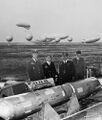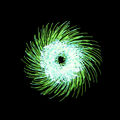Template:Selected anniversaries/March 19: Difference between revisions
No edit summary |
No edit summary |
||
| Line 13: | Line 13: | ||
||1830: Hubert Anson Newton born ... astronomer and mathematician, noted for his research on meteors. Pic. | ||1830: Hubert Anson Newton born ... astronomer and mathematician, noted for his research on meteors. Pic. | ||
||1837: Eugen Cornelius Joseph von Lommel born ... physicist. He is notable for the Lommel polynomial, the Lommel function, the Lommel–Weber function, and the Lommel differential equation. Pic. | |||
||1863: The ''SS Georgiana'', said to have been the most powerful Confederate cruiser, is destroyed on her maiden voyage with a cargo of munitions, medicines and merchandise then valued at over $1,000,000. Pics: map, artifacts. | ||1863: The ''SS Georgiana'', said to have been the most powerful Confederate cruiser, is destroyed on her maiden voyage with a cargo of munitions, medicines and merchandise then valued at over $1,000,000. Pics: map, artifacts. | ||
| Line 34: | Line 36: | ||
||1914: Leonidas Alaoglu born ... Canadian-American mathematician and theorist ... known for his result, called Alaoglu's theorem on the weak-star compactness of the closed unit ball in the dual of a normed space, also known as the Banach–Alaoglu theorem. Pic: http://www.math.caltech.edu/events/alaoglu14.html | ||1914: Leonidas Alaoglu born ... Canadian-American mathematician and theorist ... known for his result, called Alaoglu's theorem on the weak-star compactness of the closed unit ball in the dual of a normed space, also known as the Banach–Alaoglu theorem. Pic: http://www.math.caltech.edu/events/alaoglu14.html | ||
||1915: Pluto was photographed for the first time, 15 years before it was officially discovered by Clyde Tombaugh at the Lowell Observatory. Pic. | ||1915: Pluto was photographed for the first time, 15 years before it was officially discovered by Clyde Tombaugh at the Lowell Observatory. Pic. TO_DO | ||
||1917: Laszlo Szabo born ... chess player. Pic (chess!). | ||1917: Laszlo Szabo born ... chess player. Pic (chess!). | ||
| Line 40: | Line 42: | ||
||1918: The U.S. Congress establishes time zones and approves daylight saving time. | ||1918: The U.S. Congress establishes time zones and approves daylight saving time. | ||
||1928: Emil | File:Emil_Wiechert.jpg|link=Emil Wiechert (nonfiction)|1928: Physicist and geophysicist [[Emil Wiechert (nonfiction)|Emil Wiechert]] dies. Wiechert made contributions to both fields, including presenting the first verifiable model of a layered structure of the Earth, and being among the first to discover the electron. | ||
||1930: Anatole Beck born ... mathematician. Pic. | ||1930: Anatole Beck born ... mathematician. Pic. | ||
||1941: Nikolaĭ Semenovich Kurnakov dies ... chemist who was internationally recognized as the originator of physicochemical analysis and he was one of the principal founders of the platinum industry in the USSR. A chemical reaction that he pioneered, known as the Kurnakov test, is still used to differentiate cis from trans isomers of divalent platinum and is his best-known contribution to coordination chemistry. Pic. | ||1941: Nikolaĭ Semenovich Kurnakov dies ... chemist who was internationally recognized as the originator of physicochemical analysis and he was one of the principal founders of the platinum industry in the USSR. A chemical reaction that he pioneered, known as the Kurnakov test, is still used to differentiate cis from trans isomers of divalent platinum and is his best-known contribution to coordination chemistry. Pic. | ||
Revision as of 11:18, 18 March 2020
1610: Painter Hasegawa Tōhaku dies. He founded the Hasegawa school and one of the great painters of the Azuchi–Momoyama period (1573-1603). He is best known for his byōbu folding screens, such as Pine Trees and Pine Tree and Flowering Plants.
1816: Physician and activist Filippo Mazzei dies. He acted as an agent to purchase arms for Virginia during the American Revolutionary War.
1928: Physicist and geophysicist Emil Wiechert dies. Wiechert made contributions to both fields, including presenting the first verifiable model of a layered structure of the Earth, and being among the first to discover the electron.
1958: Army research laboratories convert modern plowshares into ancient swords. Industrialist and alleged supervillain Baron Zersetzung declares the technique "an astonishing breakthrough, and a milestone in military-industrial contract fulfillment."
1978: Mathematician Gaston Maurice Julia dies. He devised the formula for the Julia set, which consists of values such that an arbitrarily small perturbation can cause drastic changes in the sequence of iterated function values. Julia's work later proved foundational to chaos theory.
1979: Accidental release of Carnivorous dirigibles blamed for outbreak of crimes against mathematical constants.
1987: Physicist and academic Louis de Broglie dies. He postulated the wave nature of electrons and suggested that all matter has wave properties. He won the Nobel Prize for Physics in 1929, after the wave-like behavior of matter was first experimentally demonstrated in 1927.
2017: Steganographic analysis of Spinning Thistle accidentally releases the criminal mathematical function Gnotilus.






